Though obviously a departure from the subject of Bordeaux, this post does concern another fine French wine region, so I’m hoping you will not mind
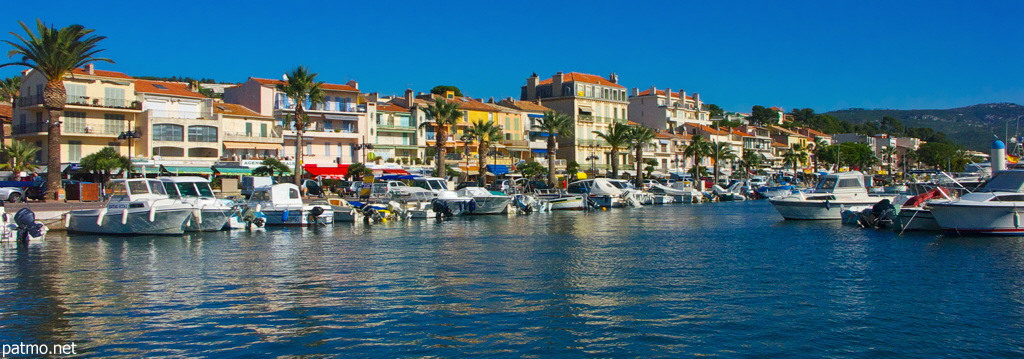
Here’s the background: a friend with a house in Bandol, a picturesque small port (population 8,500) on the Mediterranean coast 50 km. east of Marseille, invited my wife and me to come and visit last month. Fortunately, my friend also shares a love of good wine (in fact, his family own a vineyard in the Beaujolais) and he kindly offered to help me to get to know the wines of Bandol
Bandol produces roughly 65% rosé, 30% red, and 5% white on 1,500 hectares of vines. The star here is Mourvèdre, a variety found elsewhere in southern France, as well as the Valencia and Jumilla regions of Spain. Of course, complementary grape varieties are also allowed.
There is a Maison du Vin in Bandol, but I regret to say that the people there seemed bored, unhelpful, and not very clued-in. So we just did our own thing and visited five estates.
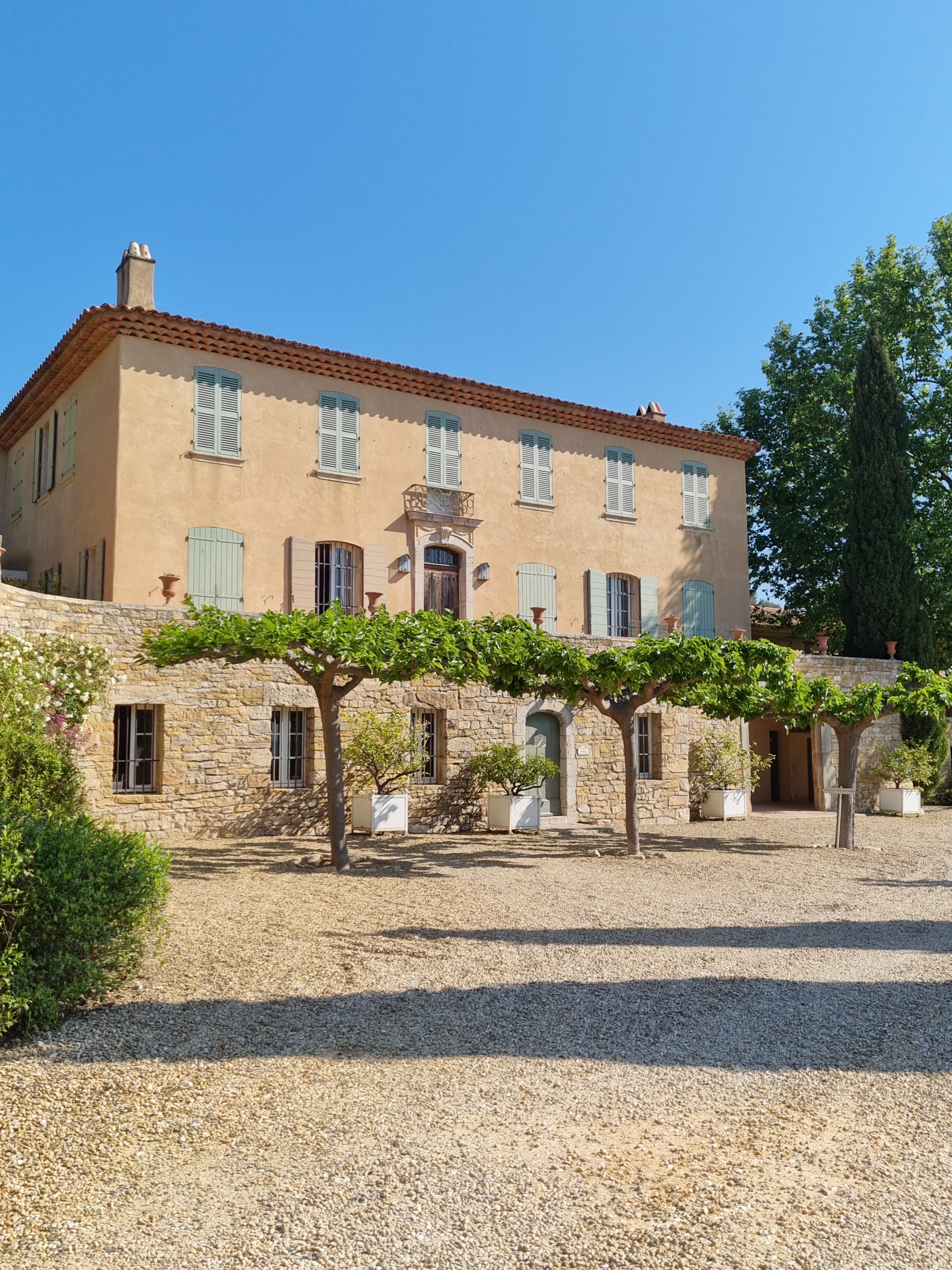
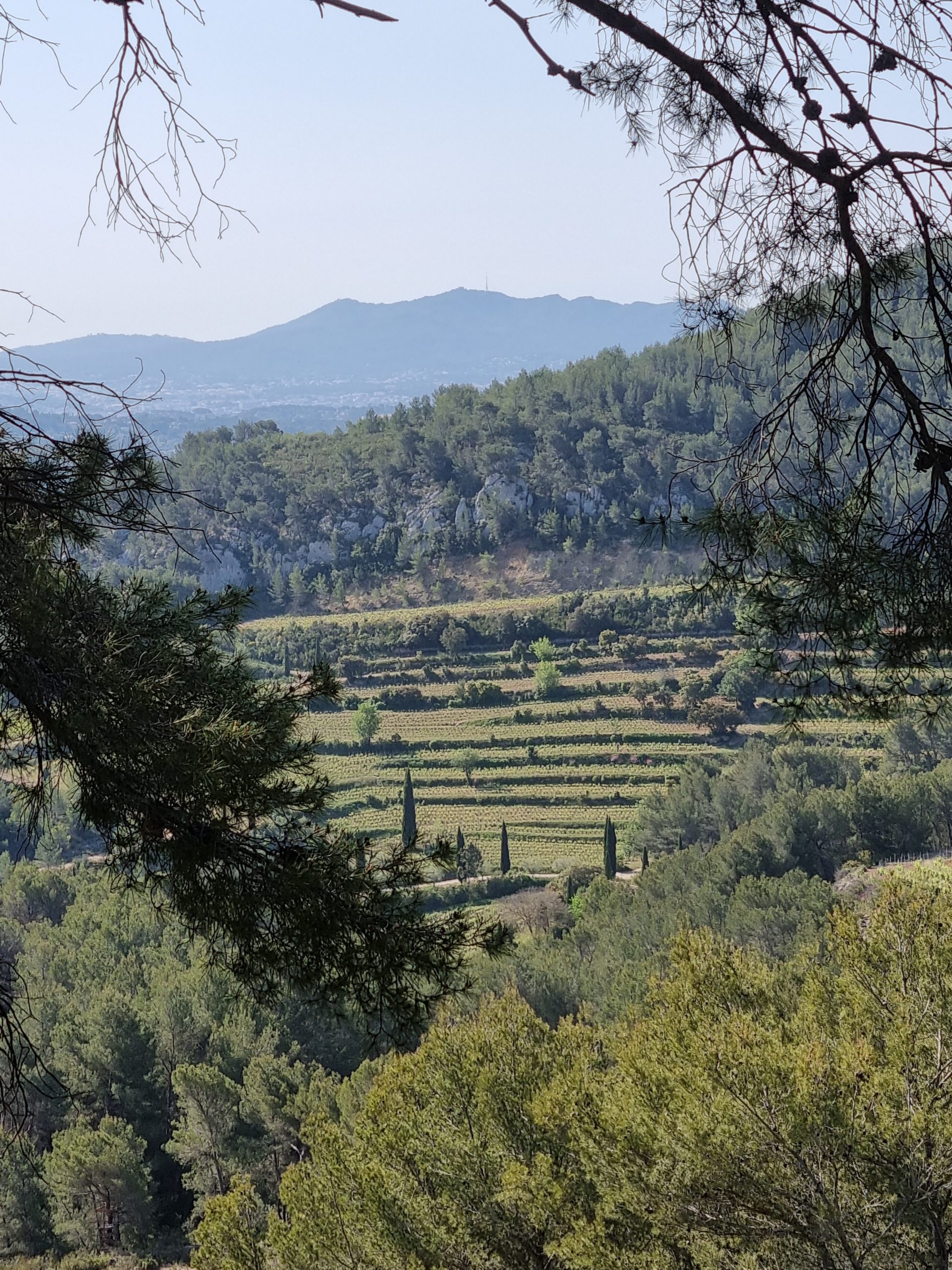
The first was to Château Pibarnon with just over 50 hectares of vines in La Cadière-d’Azur, in a beautiful and rather secluded location. This prestigious estate owned by the Comte de Saint-Victor started out with just 3 in the late 1970s. The vines grow in a gorgeous setting, mainly in an amazing natural amphitheatre – one of the loveliest vineyards I have ever seen.
We tasted several wines.
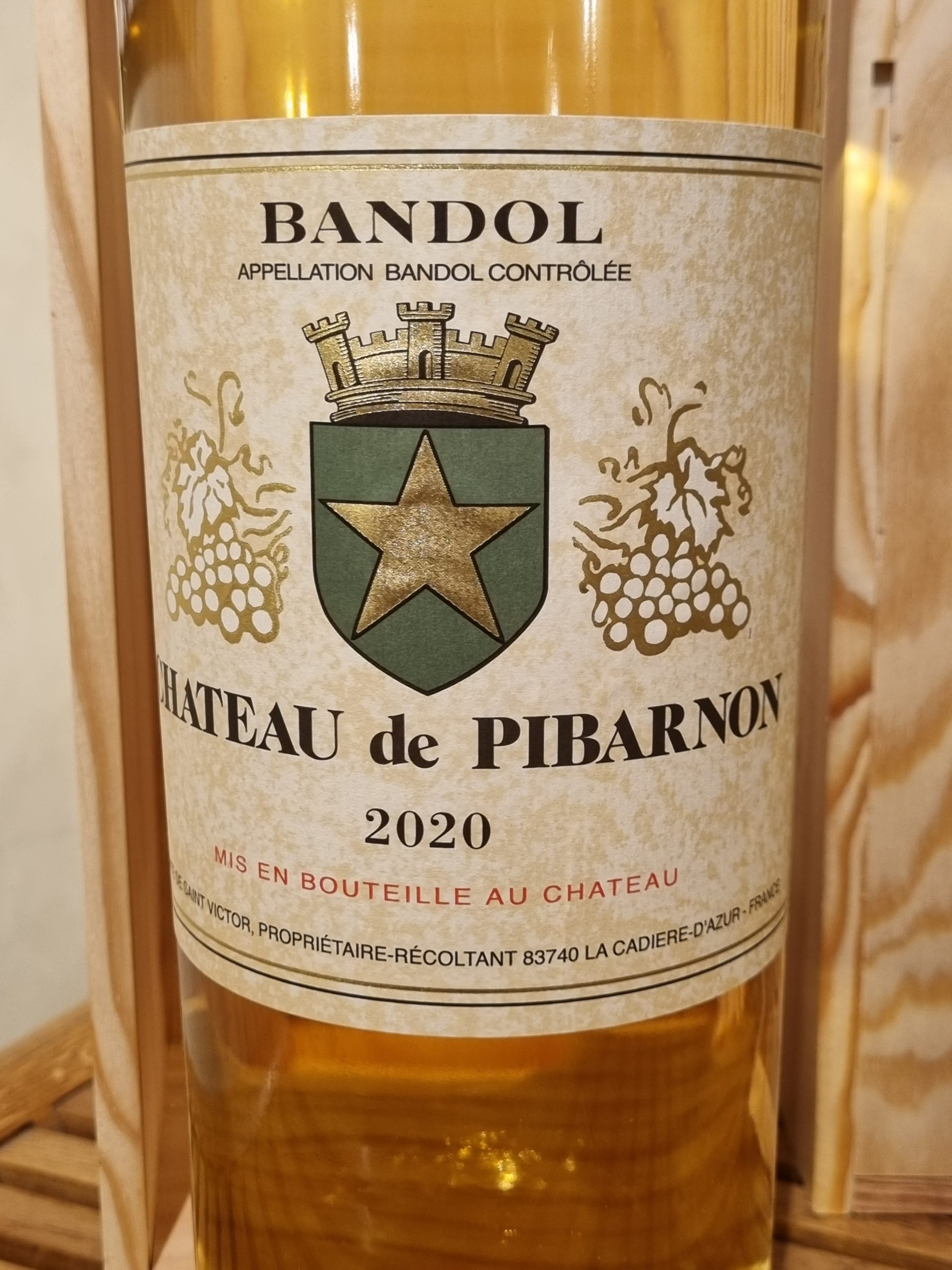
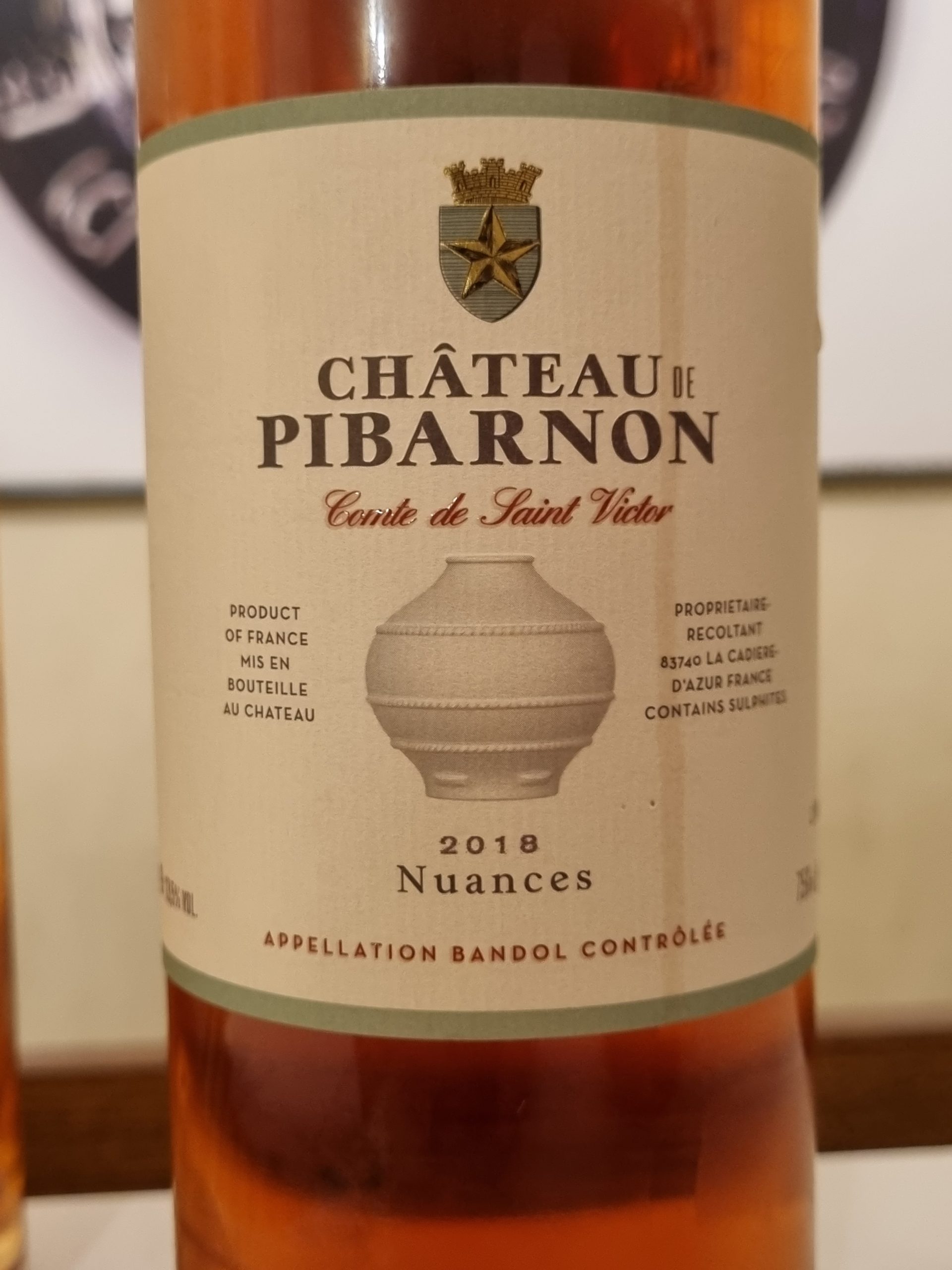
The 2020 Pibarnon rosé, containing 35% Cinsault, had a medium-pale salmon-pink color. The nose was fruity and fairly subtle. The wine started out relatively rich on the palate, then showing fairly mineral on the aftertaste, with some grip. Definitely a cut above most Provence rosés.
The 2018 Nuances de Saint Victor Bandol rosé (5,000 bottles a year) underwent 12 hours of maceration. It had a similar color, but a more complex and delicate bouquet. There was definitely a step up on the palate, with cherry and cherry stem flavors along with a gummy finish – a truly superior rosé, what the French call “un rosé de gastronomie” as opposed to the cheap, cheerful, and thirst-quenching kind.
When listing the best rosé wines of France, one often cites Tavel, Marsannay, and Rosé des Riceys. Well, a wine like this Bandol definitely belongs in that category too.
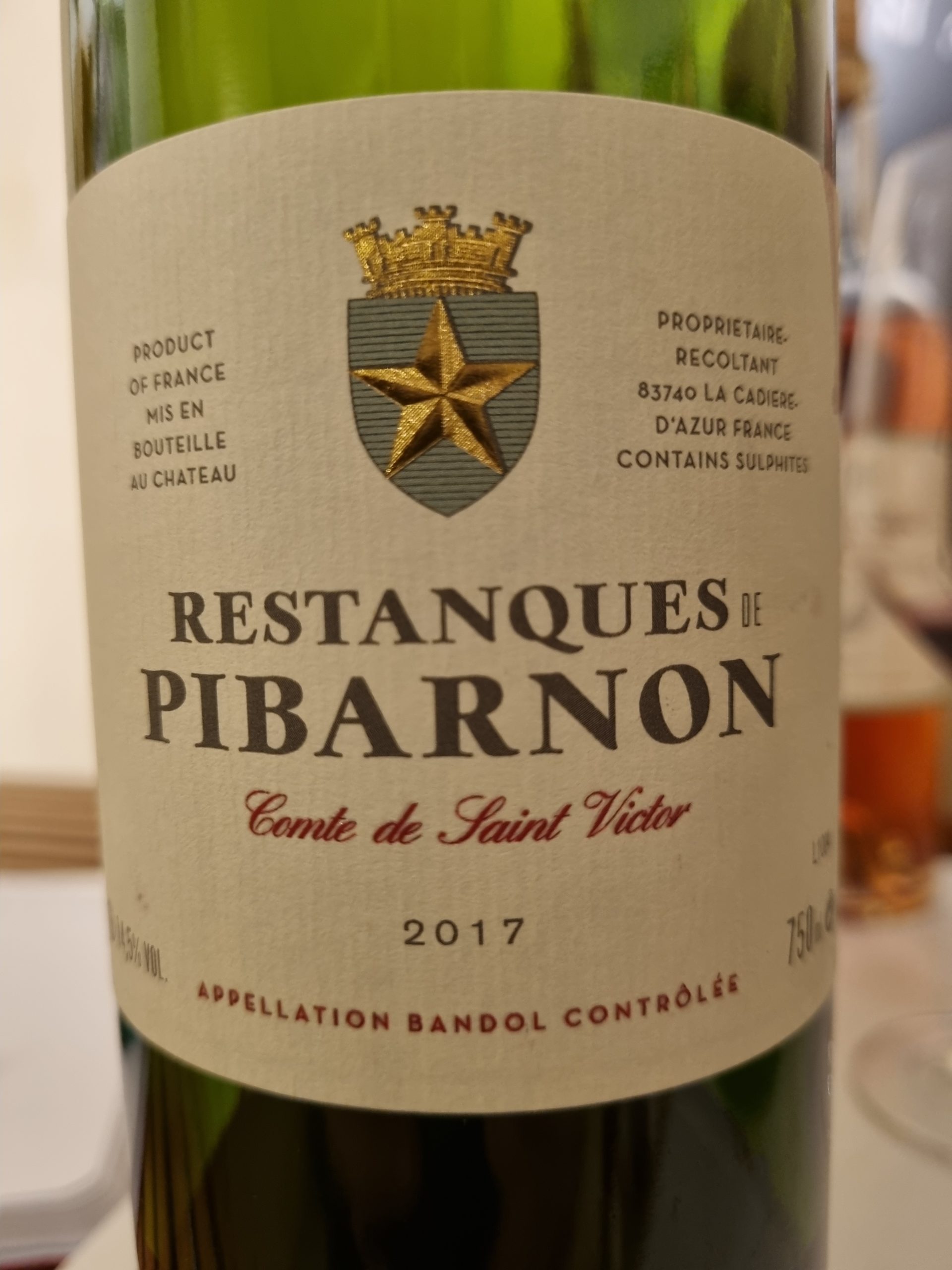
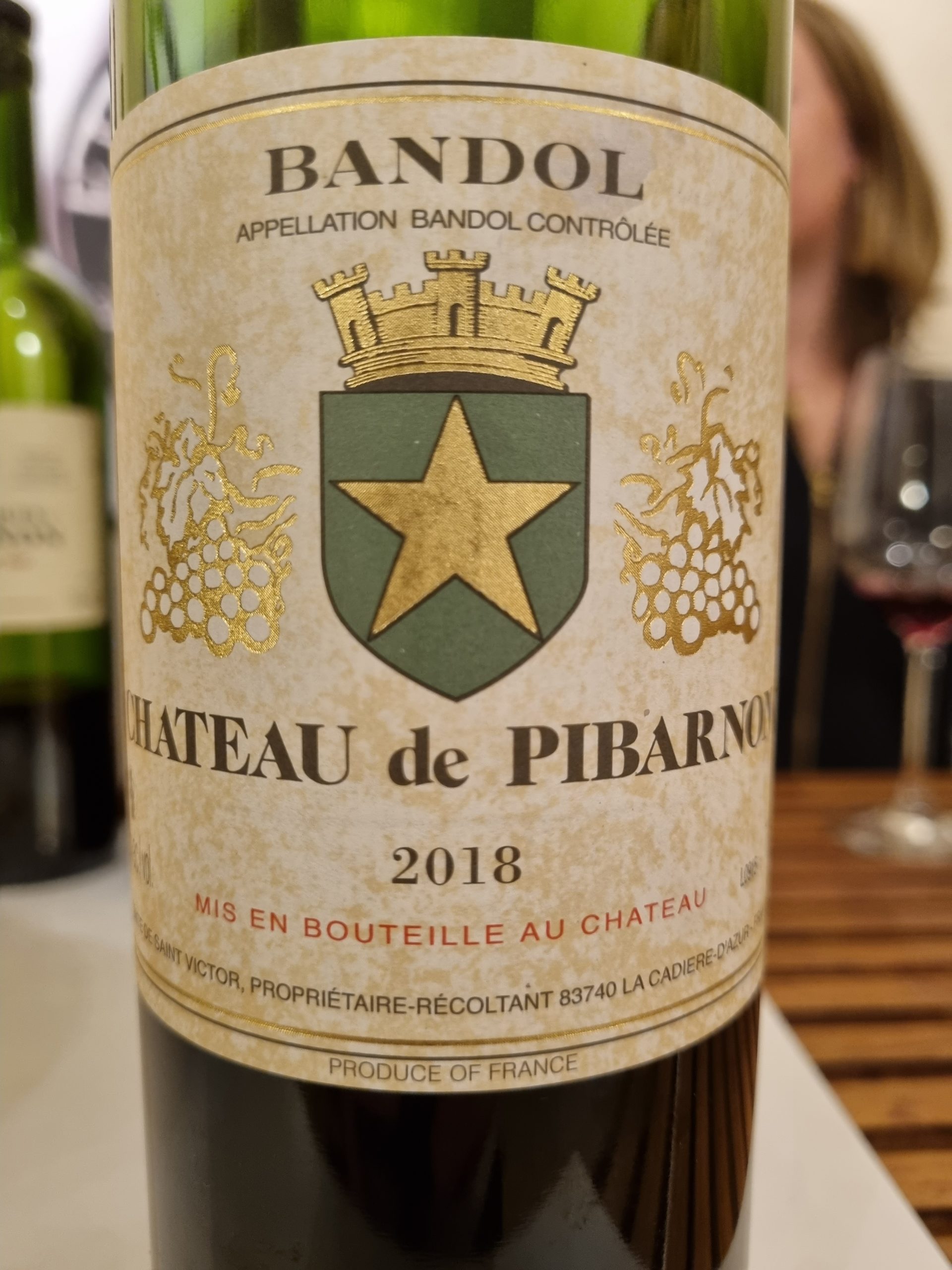
2017 Restanques: This local word describes small stone walls behind which vines are planted, often on slopes. This red Bandol from young vines had a medium-deep color with a nose of candied fruit that was a bit muted, but elegant. The wine was rich and noticeably high in alcohol (14.5%) on the palate, but classy, with good overall fruit, as well as dried fruit overtones. A very nice second wine.
They feel at Pibarnon that it will be at its best 8-10 years after the vintage.
2018 Pibarnon rouge: The color here looked older than the previous wine. The nose was elegant, sweet, and tertiary, with understated fruit. The impression of quality carried over to the palate, with great structure and finesse. There was a long aftertaste and although 2018 is not considered a great year, perhaps the toned-down qualities due to less sun is what endeared it to me. My notes say “a winner”, and I bought some to take home with me.
We ended the tasting with the 2020 Restanques. This red Bandol had a deeper color and was a bit rustic on the nose. The wine showed some heat on the palate, but also berry fruit and a velvety texture.
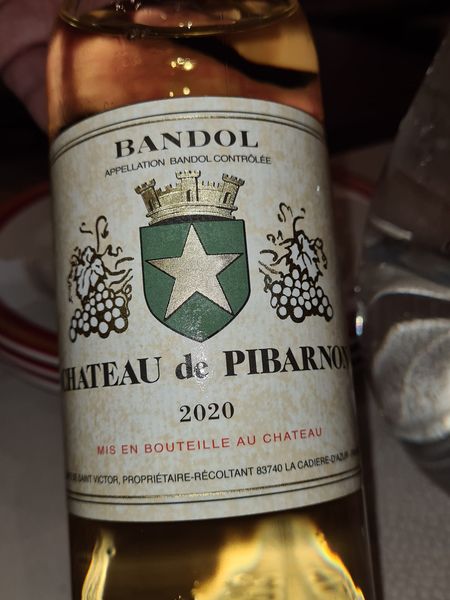
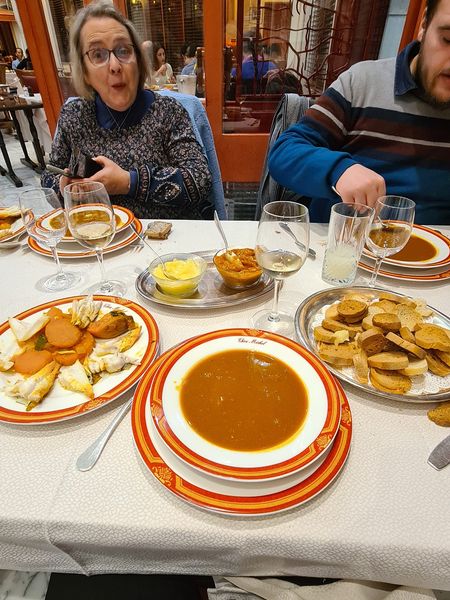
Mirroring the very small production of white wine in the Bandol appellation, Pibarnon makes only a tiny amount of white. They didn’t have any for tasting or sale, but my wife and I were fortunate enough to enjoy the 2020 vintage with bouillabaisse at the mythical Chez Michel restaurant in Marseille.
Our next stop was at Domaines Bunan – Moulin des Costes in La Cadière-d’Azur
Upon arriving, and hearing that I had come from Bordeaux, the person who welcomed us posed me a riddle: what do Bordeaux and Bandol have in common? I thought about it, scratched my head, and confessed to not knowing the answer, which was: they are only two French communal appellations that don’t actually have any vines in the eponymous commune. Now there’s a real wine trivia question for you!
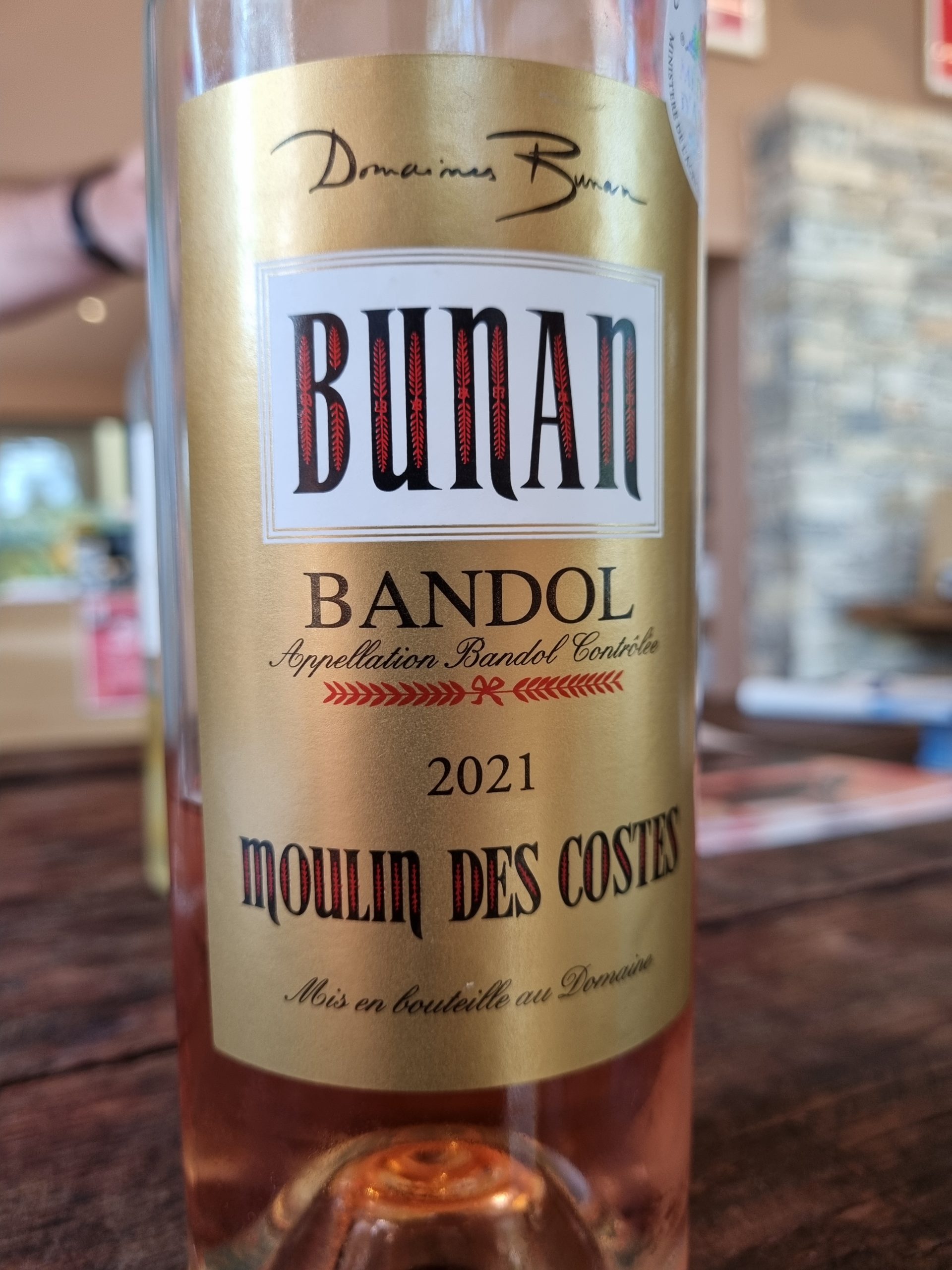
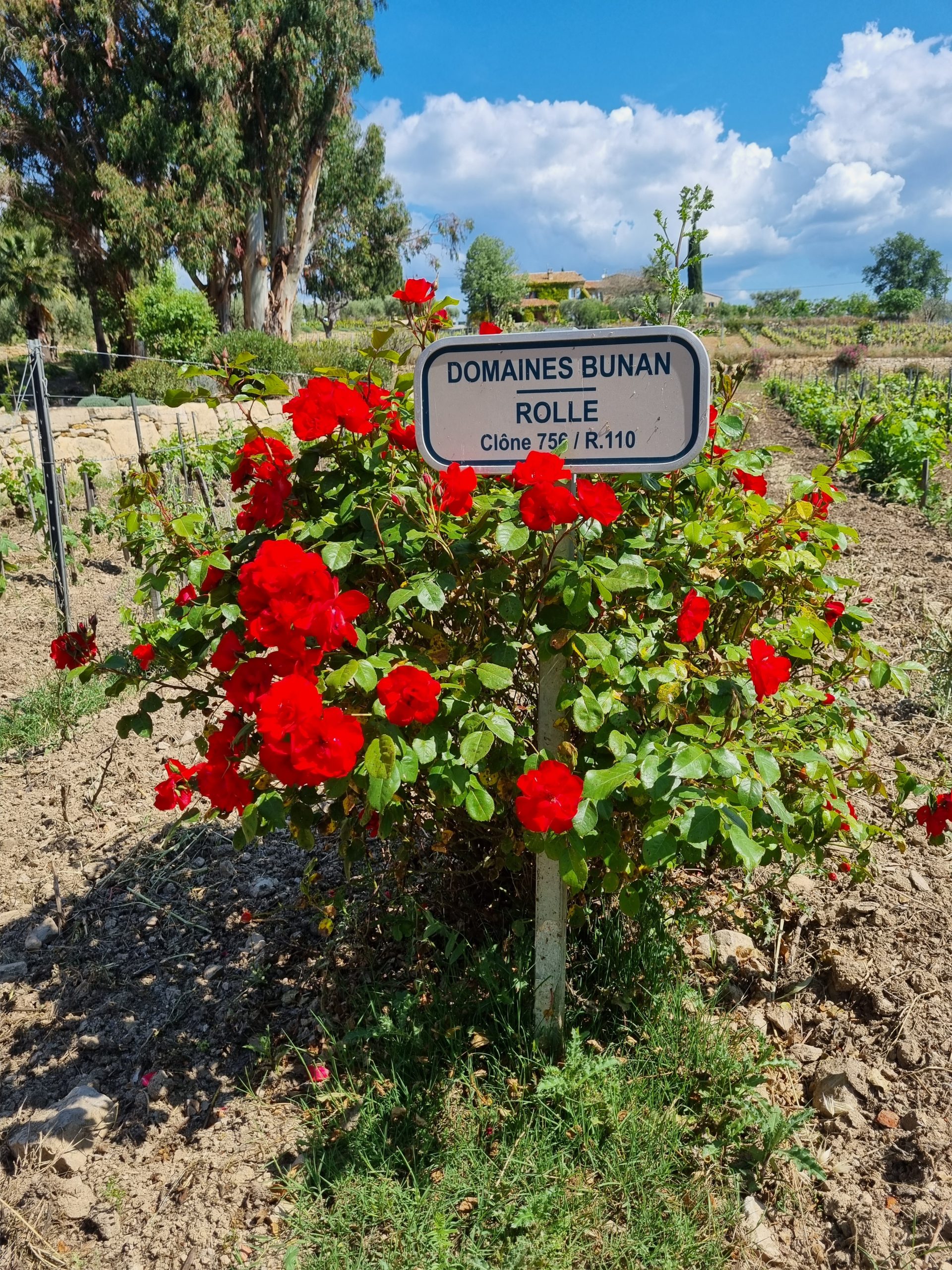
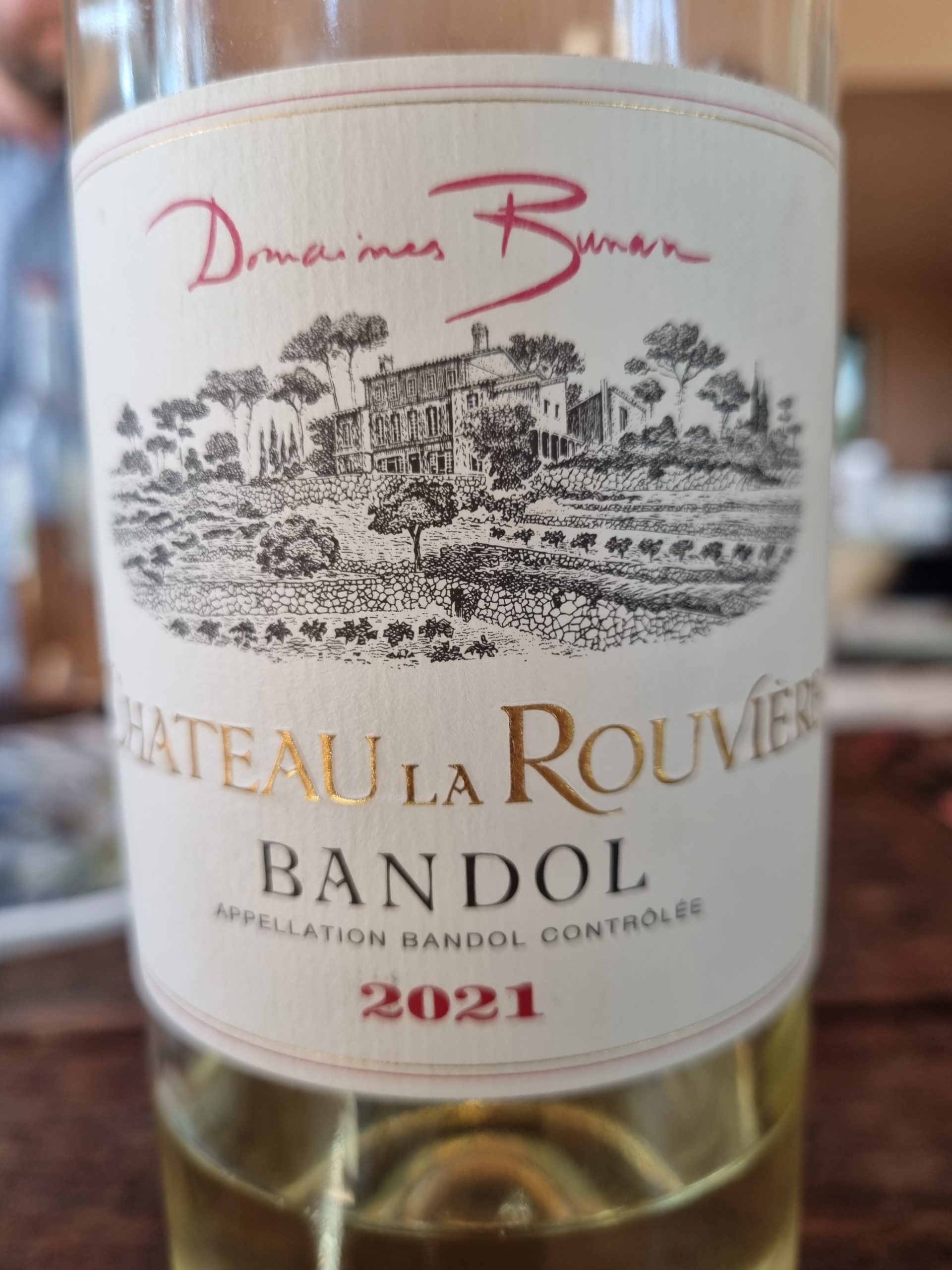
Bunan is a largish operation, created in 1961 by Paul Bunan, a Pied Noir who, like so many others, had to abandon everything during the Algerian War and move to France. Why Bandol? The story goes that he had read a newspaper article about Marlon Brando’s engagement (eventually broken off) to a girl from there and had formed a romantic image of the place in his mind…
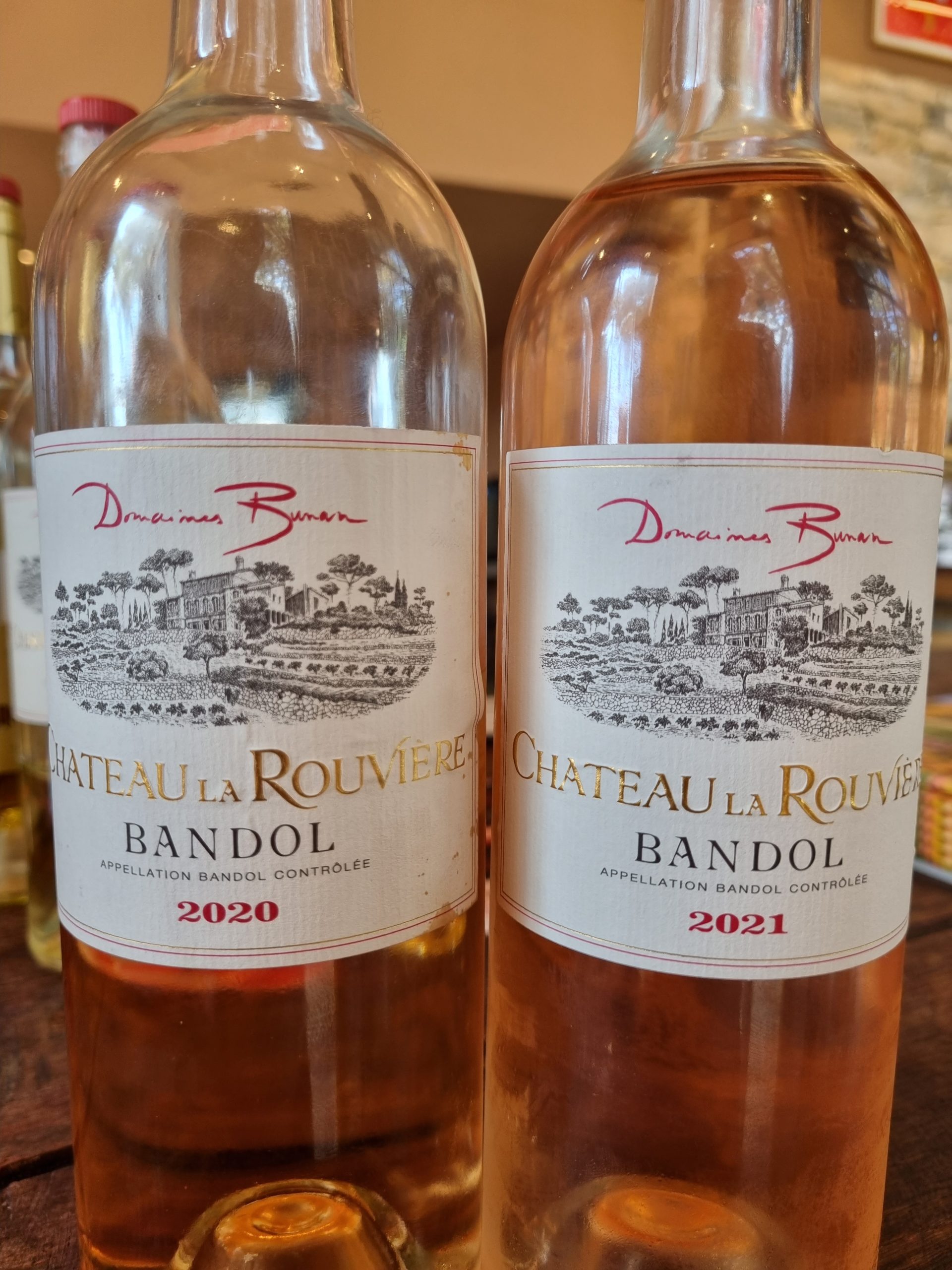
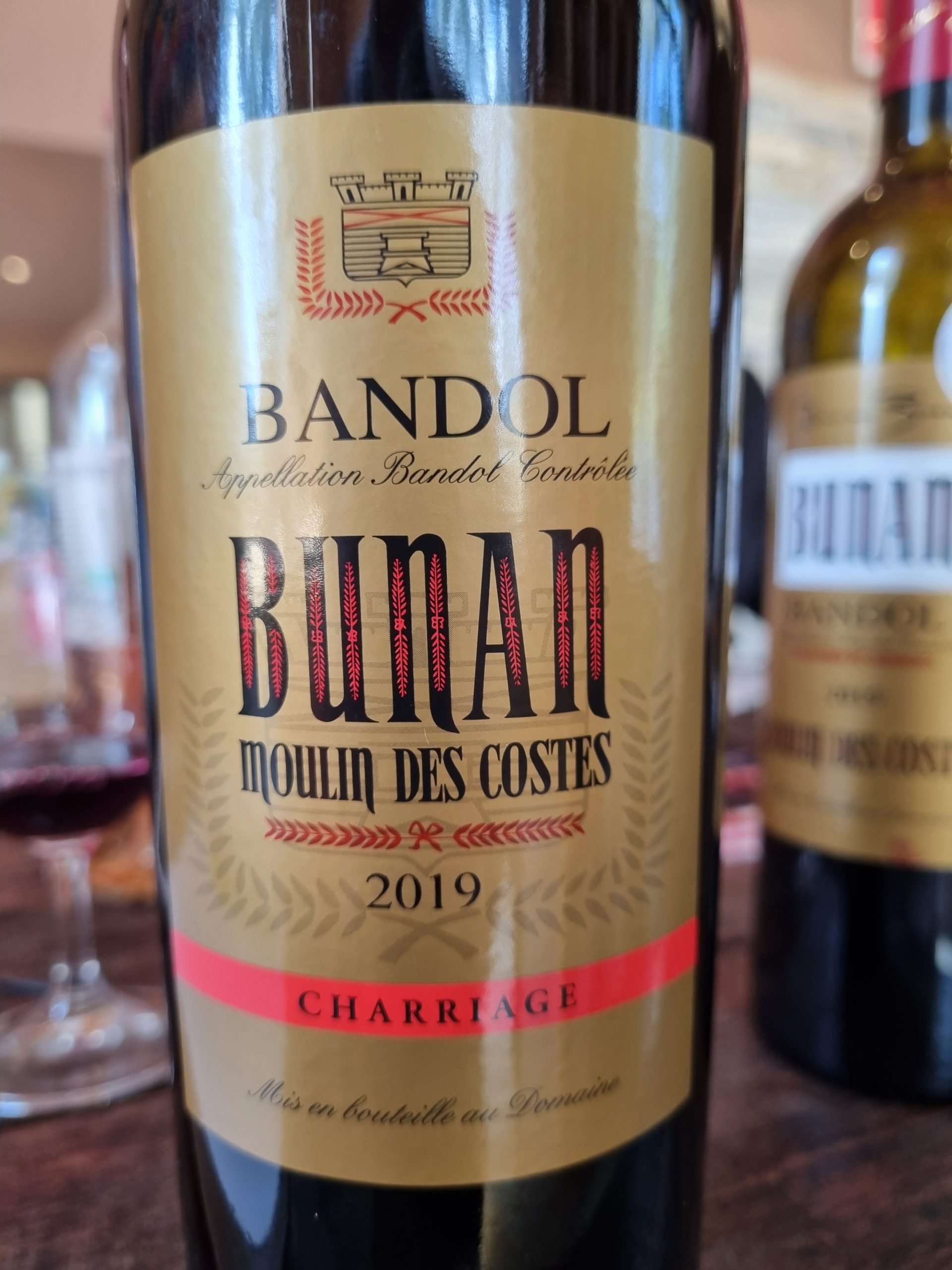
Bunan have three vineyards estates: Moulin des Costes and Château la Rouvière in the Bandol appellation, as well as Bélouvé (meaning “beautiful grape” in Provençal), producing mostly Rosé de Provence. I tasted nine wines chez Bunan and will give an overview rather than a detailed reproduction of my notes. Quality was good, but not compelling. Two red Bandols stood out: the 2018 Château la Rouvière red and the unusual 2019 Moulin des Costes cuvée Charriage. The latter, made from very old Mouvèdre vines, is named after a geological term describing a thrust sheet of rock moved by oregensis, i.e. the folding of the earth’s crust. The wine was intriguing, flavorsome, and super-concentrated, but I felt that it had tipped just that little bit over into the top-heavy category.
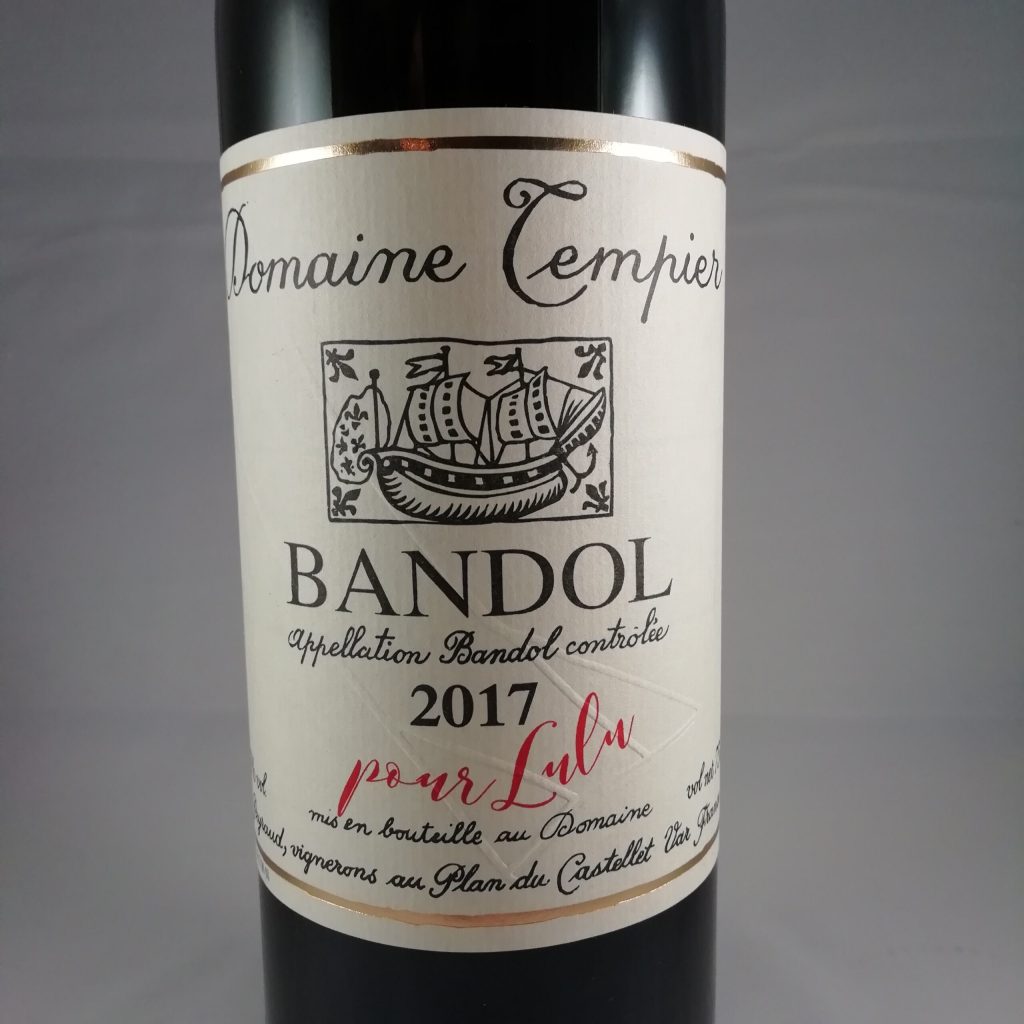
My next visit was to Domaine Tempier in Le Castellet, a 60-hectare estate with an excellent international reputation. The vineyards grow on 4 different, but very distinct terroirs in the immediate vicinity. The estate is located not far from the town of Bandol. I tasted two wines there. The 2021 rosé was very pale and had a noncommittal nose. It seemed almost sweet on the palate at first, then showed fruit and acidity. Although enjoyable, this was nothing to write home about. The 2017 rouge Cuvée Classique (75% Mourvèdre, 14% Grenache, 9% Cinsault, and 2% Carignan) was a different story. It had a good deep color and an appealing bouquet of dark fruit. The wine was soft on the palate with delicious berry and kirsch flavors. The alcohol may have come on a little too strong, but this was unquestionably an engaging wine and some bottles have gone into my cellar. When you consider the price of many fine French wines these days, the cost was really very reasonable.
Domaine Tempier is named after Léonie Tempier (the great-grandmother of the legendary Lucie Peyraud). The 2017 vintage is dedicated to “Lulu” Peyraud in honor of her 100th birthday. She died three years later. The boat on the label was designed by Lucie’s father, and represents wine being shipped from the port of Bandol.
Tempier also produce three named vineyard wines (La Tourtine, Casbassaou, La Migoua) that I would have loved to taste, but that was not possible during my visit. Should I see any of these in a store, I would be sure to snap them up.
Domaine Tempier has a very loyal following in America thanks to author Richard Olney (“Lulu’s Provençal Table”), restauratrice Alice Waters of Chez Panisse in Berkeley, and importer/writer Kermit Lynch.
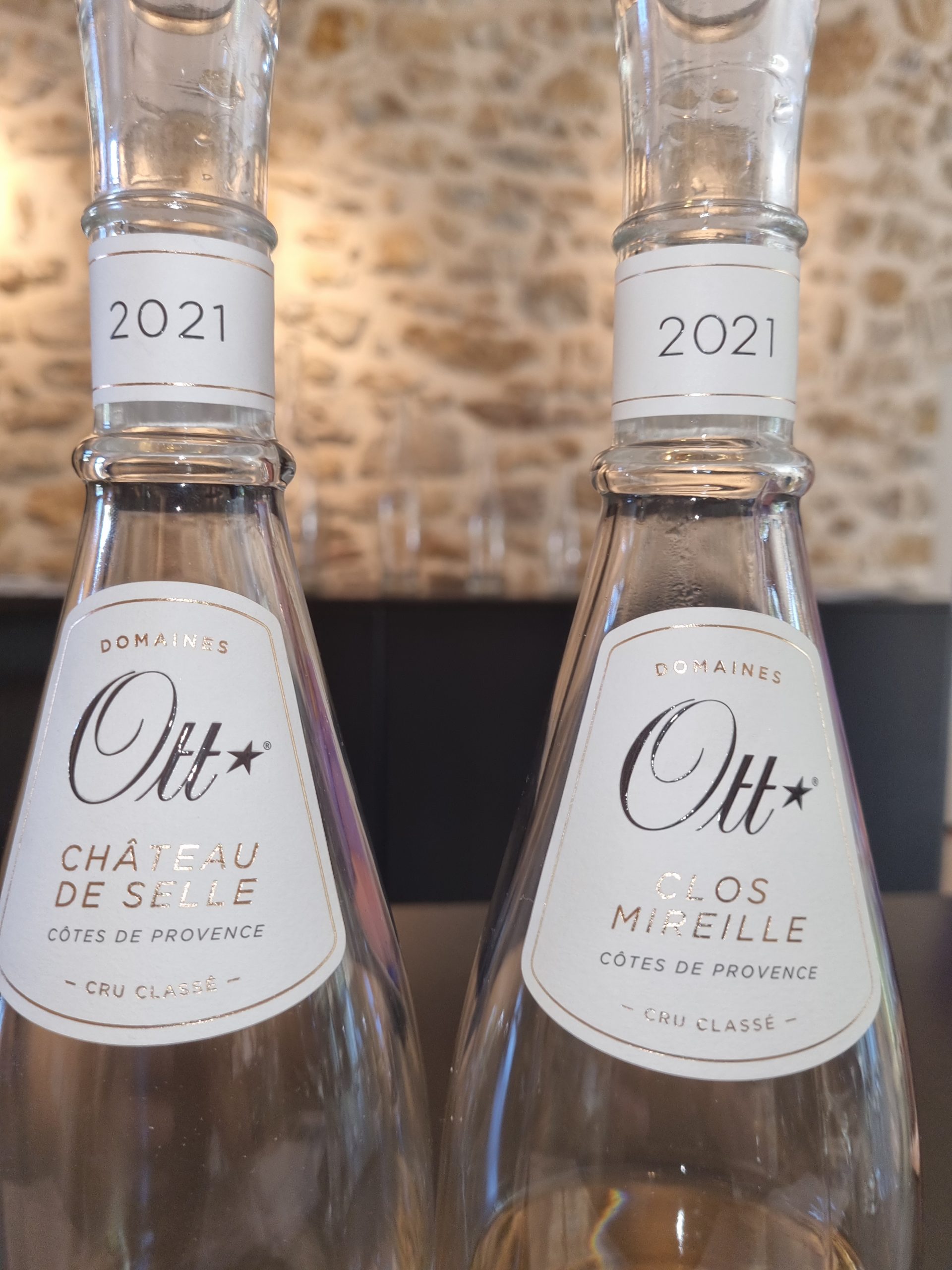
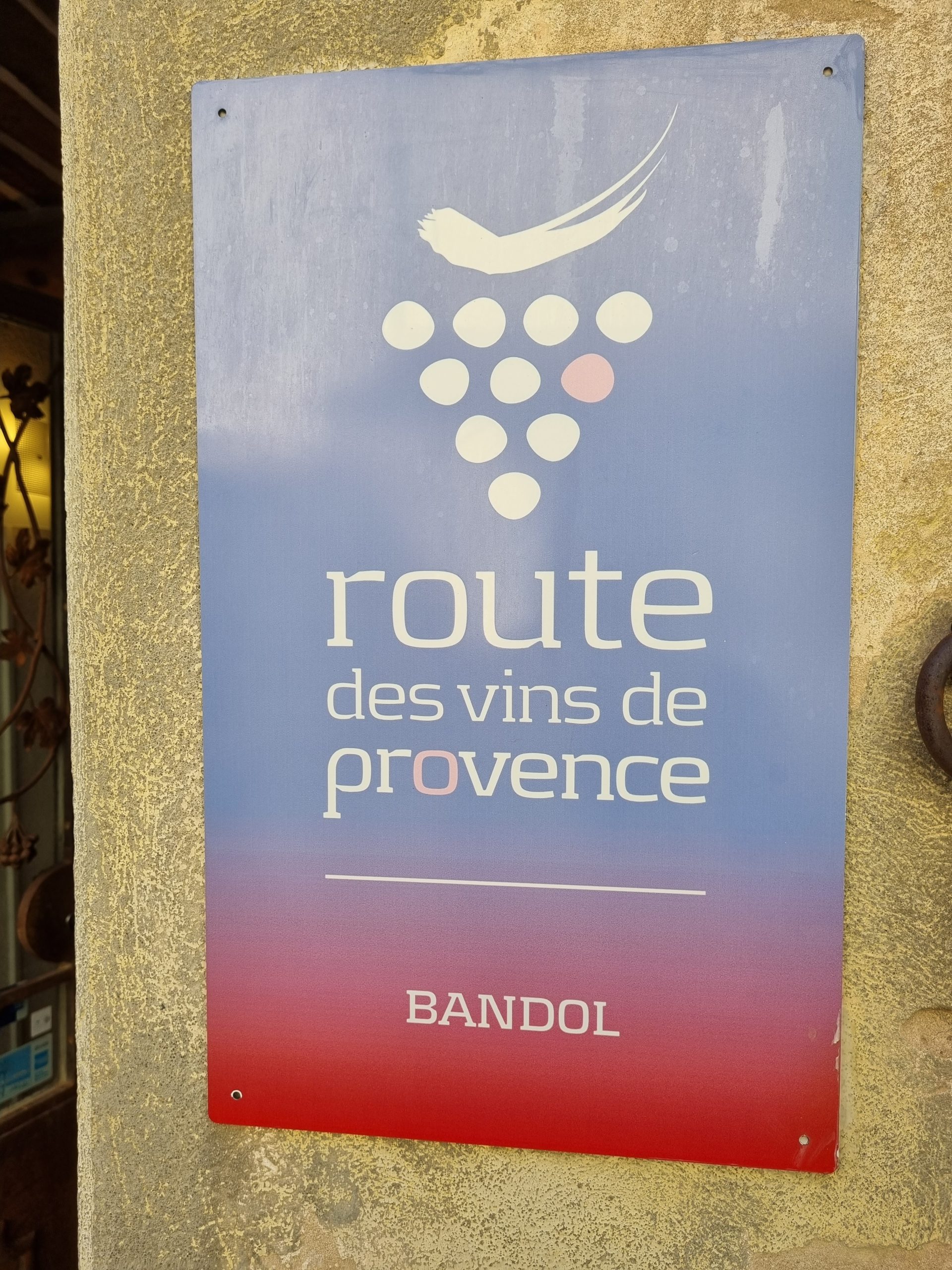
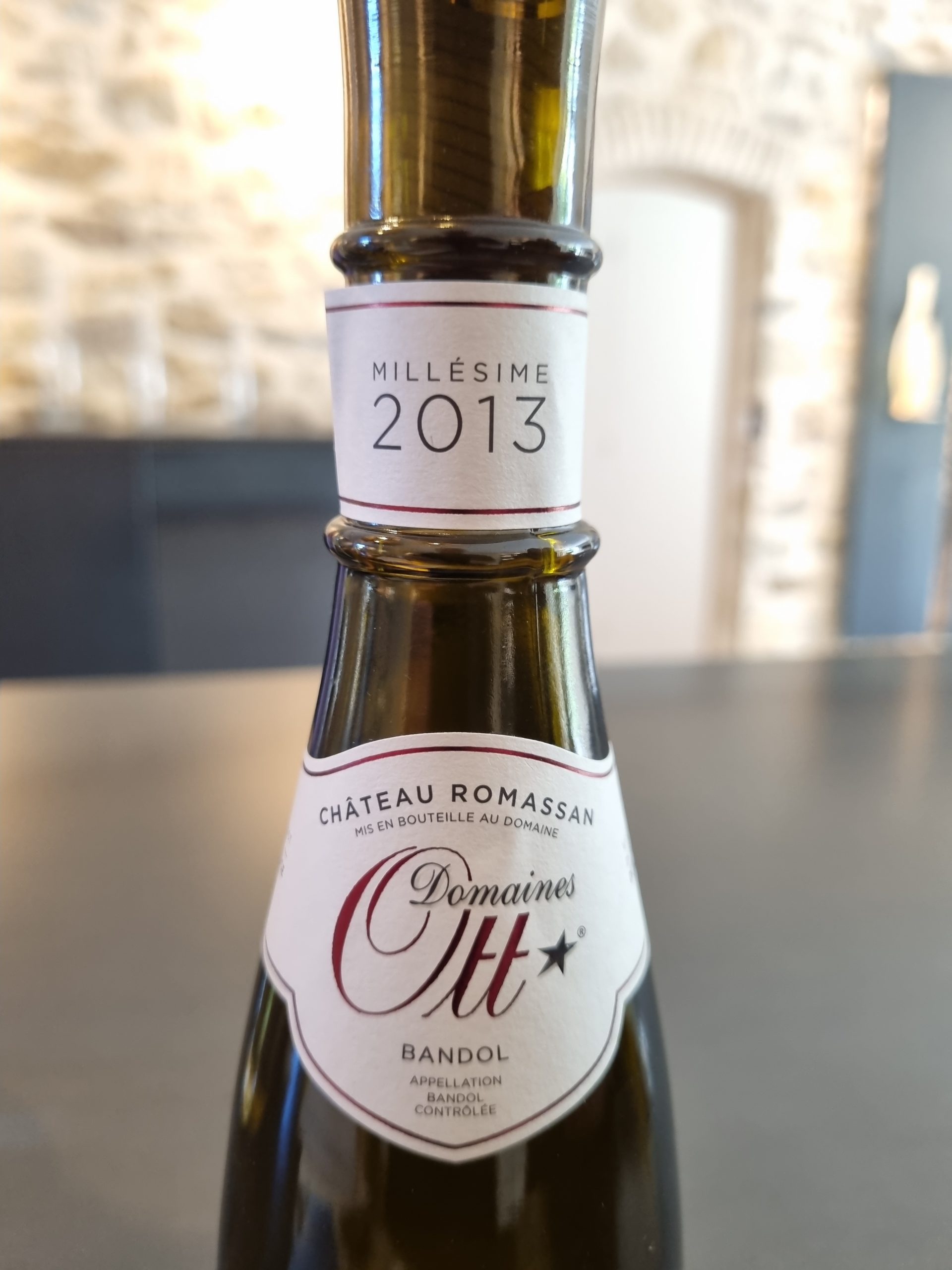
I was a bit sceptical prior to our next visit, the maison Ott in La Londe-les-Maures. I had tasted the wines on several occasions since they seem to be well-distributed in restaurants throughout France. I have always found them sound, but vastly overpriced.
Ott belong to the Louis Roederer Champagne empire that includes Delas in the Rhone Valley and Château Pichon Comtesse in the Médoc. The Ott winery is in a lovely setting and the buildings remind me of a Provençal version of a Bordeaux wine château. They are geared-up to wine tourism and kitted out with a very nice tasting room.
Ott have their own vineyards, but are mainly négociants. Their wines are sold in a proprietary bottle. Almost all their wines are AOC Côtes de Provence. Eighty percent of production is rosé, 15% white, and 5% red. I might add that Ott are on to a good thing: it’s very much of a bull market for rosé wines in general and Rosé de Provence in particular.
I tasted through three of their rosé wines and one white, all from Ott’s own vines. Two of the rosés were grand crus. It is not well-known that a classification of Provence wines (18 estates) was made in 1955. I was really struck by how incredibly pale these rosés were. The sophisticated 2021 Château de Selle had a pure mineral nose, but was a little too skinny for me. Clos Mireille from the same vintage had a somewhat smoky bouquet. It was fuller on the palate and quite fresh, but without as much character as the previous wine, even if showed greater length. The 2021 Château Romassin (non-classified) was the teeny-weeniest bit darker with salmon-colored tinges. The bouquet was exotic, but also had some soapy aromas. It was good, but unremarkable on the palate.
The 2020 Clos Mireille white wine (grown on silty soil close to the sea, with a microclimate featuring morning mist) consists of 67% Sémillon and 33% Rolle. The wine had a pale green color and a rather rustic bouquet. It was, however, more attractive on the palate with lemony overtones and an interesting balance between piercing acidity and intrinsic richness.
A look at the price list told me that I would not be buying any of the wines. But before leaving, the woman running the tasting room told me that they had a special offer. My ears pricked up… They were selling a small lot of half bottles of their 2013 red Bandol at a knock-down price. We asked if we could taste a sample. The wine presented considerable bricking as well as a rich, seductive, mature bouquet. It was round, rich, chocolatey, ferrous, and long on the palate. My friend and I split a case at 7 euros per half bottle. So not all Ott wines are expensive!
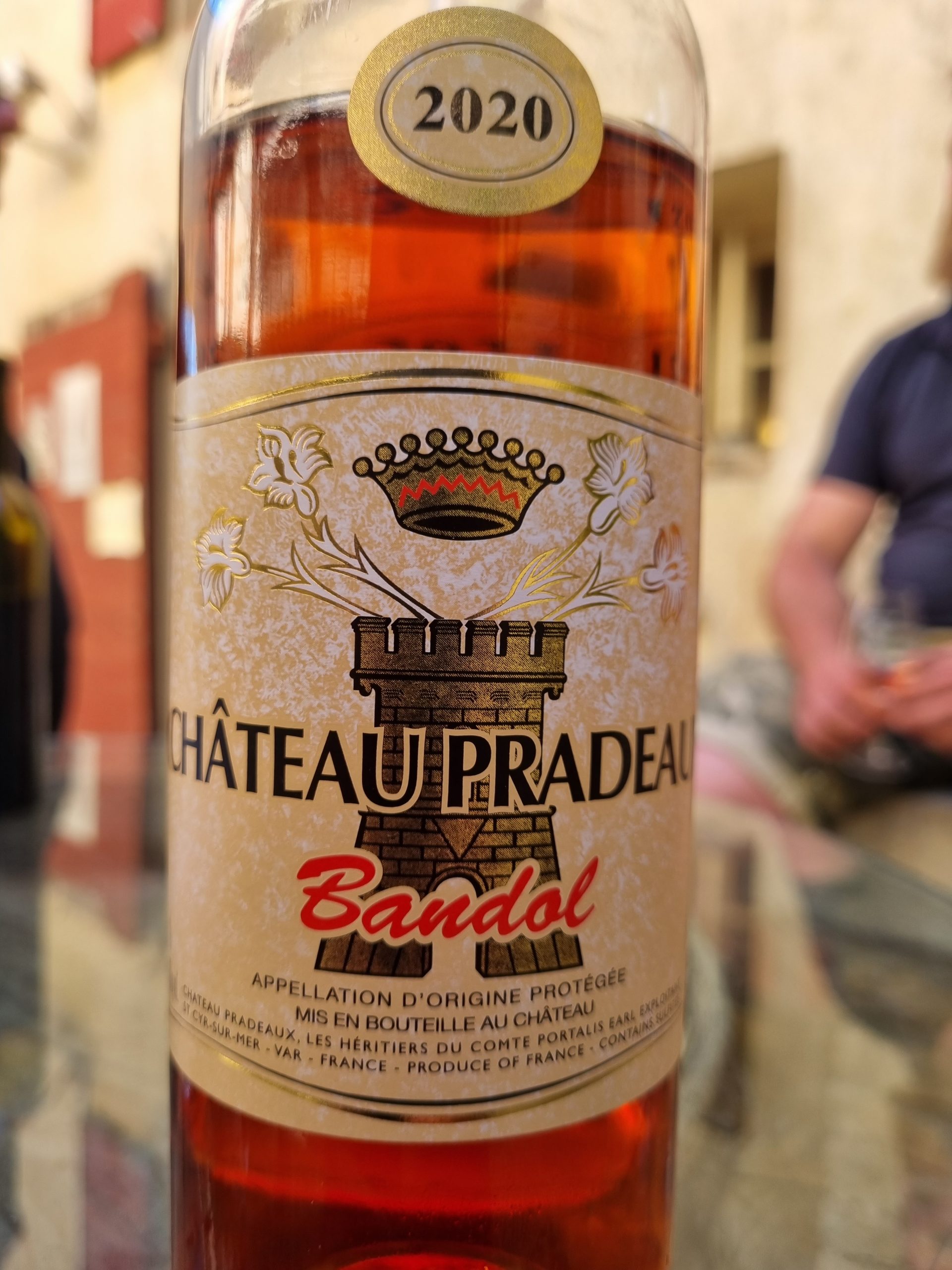
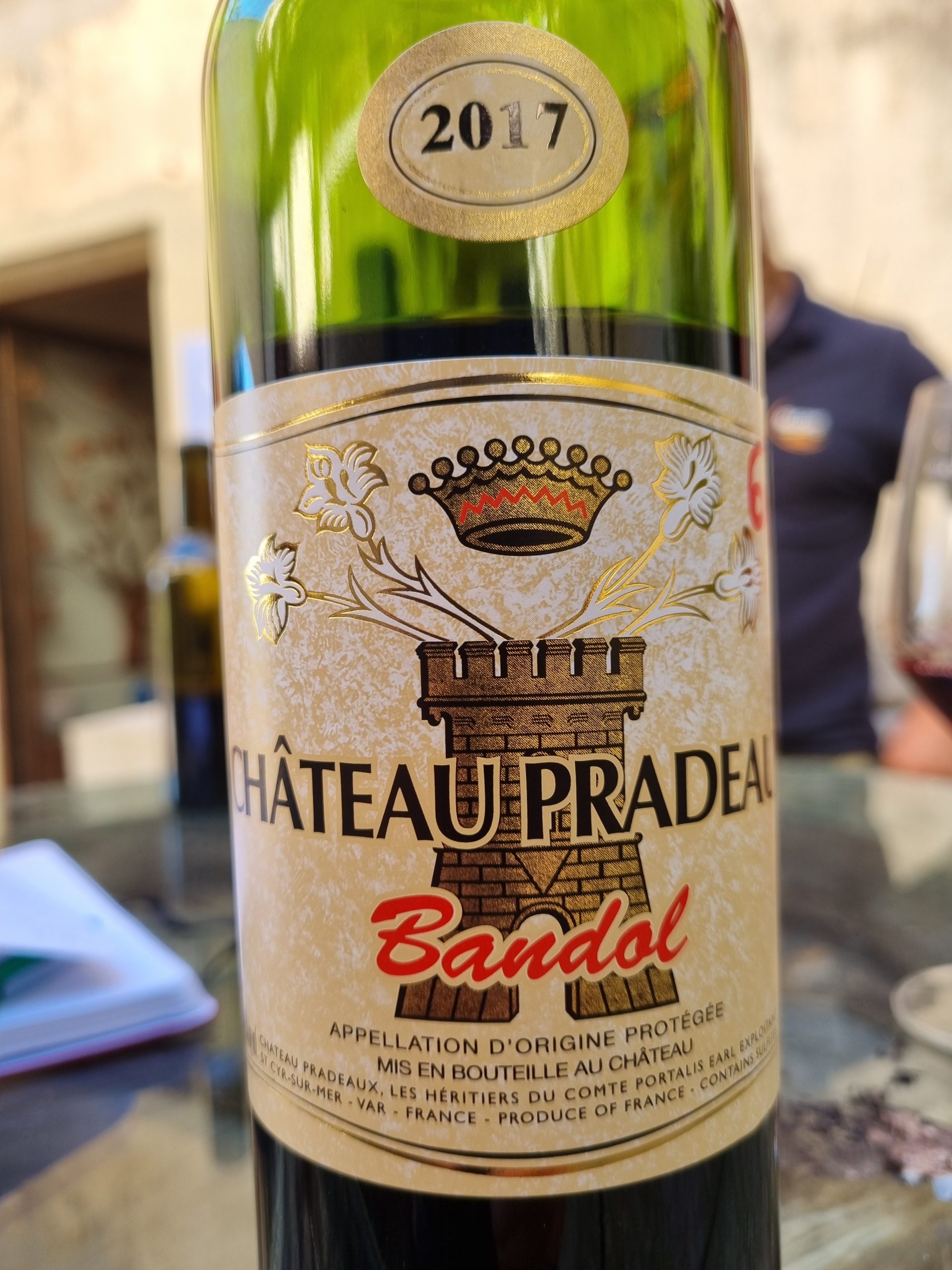
Our next and last visit was to Château Pradeaux – a decided change of pace. An old-fashioned no-frills estate owned by the Portalis family since the early 18th century, Pradeaux was far-removed from the slickness of Ott… (Jean-Marie-Etienne Portalis helped to write the French civil code and to negotiate a concordat with the Catholic Church during Napoleon’s reign).
We were welcomed by the bearded, intense Cyrille Portalis. It is always a good sign when the winemaker shows you his vines before anything else. These comprise 22 hectares in a single block around the château in the western part of the Bandol appellation.
We tasted 4 wines. The 2021 Bandol rosé had a deeper color than any other rosé tasted during my trip (and was quite impressive after Ott!). The nose was forthright and old school. The wine was full-bodied, going into a delicious minerality and a lip-smacking finish. There were nuances of citrus fruit and red fruit. Very good. The 2020 rosé was unfortunately not up to the same standard.
Then it was on to the red wines. The 2017 Le Lys Bandol was made from young wines and partly destemmed. Blended with a little Cinsault and Grenache, and aged in foudres for about 2 years, this wine reflected its limestone terroir with puckery tannin (what I call tea tannin). Yummy.
The last wine was the 2017 Château Pradeaux red Bandol. It had quite a deep color and a nose of cherry liqueur. It was rich and round on the palate, big, strapping, and seemed relatively high in alcohol. This did not show so well now, but this is the type of wine to forget about for a long time and enjoy discovering years down the road.
I will never forget tasting (indeed, drinking!) these vins de terroir around an old upturned barrel with Cyrille and his father at the end of a sunny Provençal afternoon. This was the real thing, a French wine farm without the hype and spin.
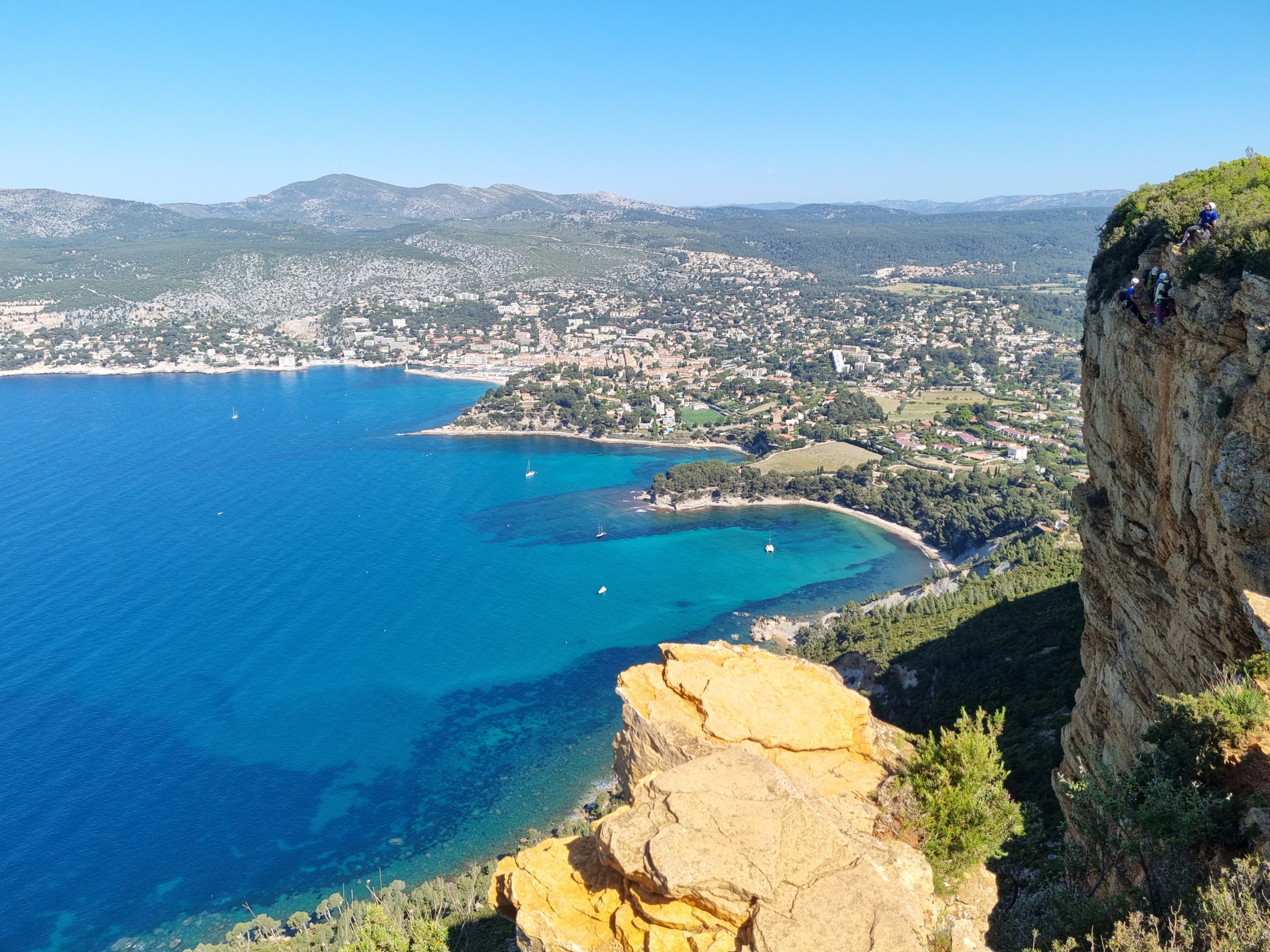
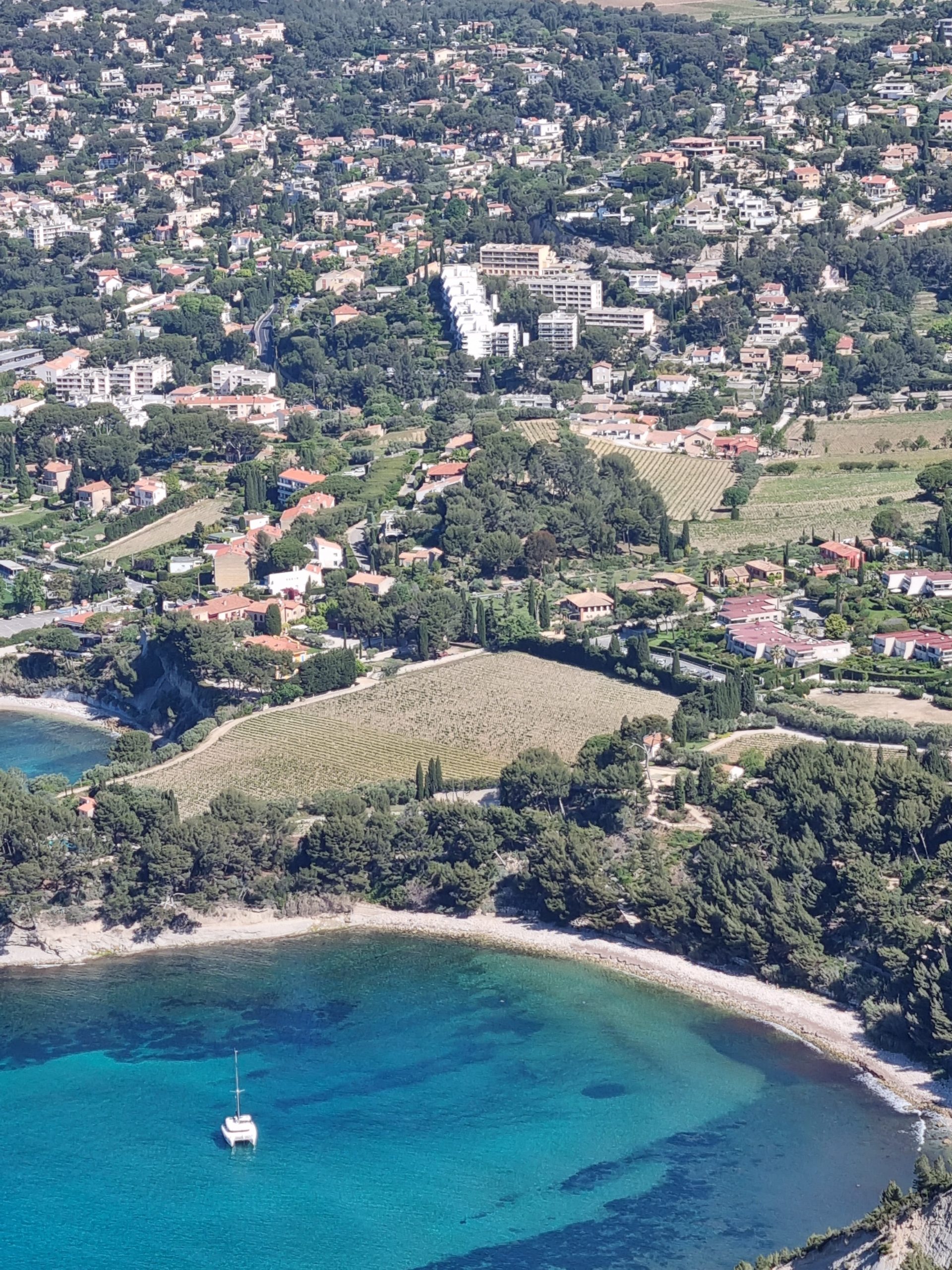
My trip to the region ended with a morning in the charming port town of Cassis, 30 km. east of Bandol. Cassis (one does not pronounce the final “s”) has a population of 7,000 and some 200 hectares of vines: 71% white, 27 rosé, and 2% red. I went there on market day, revelling in all the colors and smells once would expect to find in Provence. We enjoyed a glass of white Cassis in a café overlooking the marina and with a view of the huge 8th century Château de Cassis (now transformed into a luxury hotel) atop an abrupt cliff.
While I did not have the time to visit any producers, I did poke my nose into a wine shop and, taking the owner’s advice, bought a bottle of 2021 Domaine du Bagnol Cuvée Caganis, made from Marsanne, Clairette, Ugni Blanc, Pascal Blanc, Bourboulenc, and Grenache Blanc (mass selection). I look forward to drinking this with friends. And the person who guesses it blind is entitled to an all-expenses-paid stay at the Château de Cassis!
